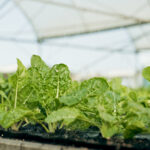Coffee farming in Kenya remains a cornerstone of the country’s agricultural exports. The nation is globally recognized for producing premium-quality Arabica coffee with rich and distinct flavor profiles.
Moreover, coffee is mainly grown in the central highlands and parts of western Kenya, where the soil and climate provide ideal growing conditions. It is a high-value cash crop that offers long-term income opportunities for both smallholder and commercial farmers.
With the right agronomic practices, effective farm management, and proper market alignment, coffee cultivation in Kenya can be both profitable and sustainable, supporting livelihoods while contributing significantly to the national economy.
1. Crop Selection and Planning
Choosing the right coffee variety is the first and most important step toward achieving high yields, disease resistance, and excellent cup quality. In Kenya, farmers can choose from several improved varieties depending on their location and farming goals.
Popular Coffee Varieties in Kenya
- SL28 and SL34: Famous for their superior flavor quality and strong drought resistance.
- Ruiru 11: A hybrid variety resistant to Coffee Berry Disease (CBD) and leaf rust, making it ideal for regions with high disease pressure.
- Batian: A modern variety that is high-yielding, disease-resistant, and adaptable to both low and high altitudes.
Planning Tips
- Always use certified seedlings from licensed nurseries to ensure quality and true-to-type plants.
- Remember that coffee farming is a long-term investment — trees typically take 2–3 years to start producing fruit.
- Whenever possible, select land located close to processing facilities or cooperatives to reduce post-harvest handling challenges and transport costs
2. Soil and Climate Requirements
Coffee thrives best in Kenya’s highland regions, where the rich volcanic soils and favorable climate provide perfect growing conditions. These areas allow farmers to produce high-quality Arabica coffee with strong flavor and aroma.
Ideal Growing Conditions
- Altitude: Between 1,300–2,000 meters above sea level — perfect for Arabica cultivation.
- Soil: Deep, well-drained loamy soils that are rich in organic matter promote healthy root development.
- Soil pH: Maintain a slightly acidic range of 5.5–6.5 for best nutrient absorption.
- Rainfall: A consistent 1,000–2,000 mm annually, well-distributed throughout the year, supports continuous growth.
- Temperature: An average of 18°C–24°C provides the ideal environment for coffee cherries to mature slowly, enhancing flavor quality.
To achieve the best results, avoid waterlogged or shallow soils and regions that experience frequent drought stress. Consistent soil testing and proper drainage management also help maintain long-term farm productivity.
3. Land Preparation and Planting Techniques
Proper site preparation is key to establishing a healthy coffee plantation.
Steps:
- Clear land and dig planting holes (2ft x 2ft x 2ft) spaced 2.5–3 meters apart
- Mix topsoil with compost or well-rotted manure
- Transplant seedlings at the onset of rains for moisture availability
Spacing: Spacing typically ranges from 2.5 x 2.5 meters to 3 x 3 meters depending on variety and management system
4. Crop Management in Coffee Farming in Kenya (Irrigation, Feeding the Crop, and Pruning)
Effective crop management is essential for maintaining healthy coffee trees and achieving consistent yields. In coffee farming in Kenya, farmers should focus on water management, proper nutrition, and pruning to keep the plants vigorous and productive throughout the seasons.
Irrigation
Although most Kenyan coffee farms are rain-fed, supplemental irrigation is crucial during dry spells. Keeping consistent soil moisture during flowering and fruiting stages supports even cherry development and prevents stress that can lower yields.
Feeding the Crop – Nutrients
To produce strong, high-yielding coffee trees, it’s vital to feed the crop with the right balance of nutrients.
- Apply manure or compost at planting and at least once a year to enrich the soil naturally.
- Use NPK fertilizers according to soil test recommendations to supply key nutrients.
- Provide foliar feeds and trace elements during the growing stages to boost leaf health and bean formation.
Regular feeding helps the coffee plant build resilience, maintain leaf color, and support steady berry development throughout the season.
Pruning and Training
- Prune regularly to enhance air circulation, sunlight penetration, and overall tree shape.
- Remove suckers and diseased branches to prevent pest infestations and improve vigor.
- Train plants into either a single-stem or multi-stem system depending on the variety and management preference.
5. Pest and Disease Control in Coffee Farming in Kenya
Effective pest and disease control is essential for maintaining healthy coffee trees and achieving consistent yields. In Kenya, coffee farmers face several common pests and diseases that can reduce both quality and production if not properly managed.
Common Coffee Pests in Kenya
- Coffee Berry Borer: The most destructive pest, damaging the beans from the inside.
- Antestia Bugs: Cause bean discoloration and off-flavors in the final coffee.
- Nematodes: Attack the roots, leading to poor plant vigor and reduced yields.
Common Coffee Diseases
- Coffee Leaf Rust: A fungal disease that causes yellow-orange spots on leaves, leading to defoliation.
- Coffee Berry Disease (CBD): A major threat during wet seasons, affecting green berries before ripening.
- Root Rot: Common in poorly drained soils and overwatered areas.
Integrated Pest Management (IPM) Strategies
- Monitor your farm regularly to detect and control outbreaks early.
- Plant resistant varieties such as Ruiru 11 and Batian to reduce vulnerability.
- Apply approved fungicides and insecticides only under professional or extension officer guidance.
- Maintain field hygiene through regular pruning, weeding, and removal of infected plants.
- Practice crop rotation and proper spacing to minimize pest buildup.
6. Harvesting and Post-Harvest Handling
Coffee is ready for harvest when cherries turn deep red and are firm to the touch.
Harvesting Steps:
- Hand-pick only ripe cherries to ensure quality
- Avoid harvesting green or overripe cherries
- Pick in intervals (every 7–14 days) during harvest season
Post-Harvest Handling:
- Wet processing (washed coffee) or dry processing (natural coffee) depending on infrastructure
- Pulp, ferment, wash, and dry beans thoroughly
- Store parchment in cool, dry, well-ventilated conditions
Deliver to cooperatives, factories, or certified buyers
7. Marketing and Value Addition
Coffee Marketing Channels:
- Cooperative societies and farmers’ groups
- Licensed coffee dealers and exporters
- Nairobi Coffee Exchange (auction system)
- Direct marketing via contract farming or specialty coffee markets
Value Addition Opportunities:
- On-farm coffee roasting and packaging
- Branded coffee for local or export retail
- Coffee tourism and Agri-tour experiences
8. Farm Business and Record Keeping
Treat coffee farming in Kenya as a long-term investment requiring professional management.
Farm Management Tips:
- Keep detailed records on planting, inputs, pruning, spraying, harvest, and sales
- Analyse costs and revenues to guide decisions
- Register with local cooperatives or marketing agents
- Explore access to financing, subsidies, or insurance
Tech and Extension Support:
- Use mobile tools for weather updates, pest alerts, and price trends
- Engage agronomic consultants and attend farmer field schools
Unlocking the Potential of Coffee Farming in Kenya
Kenya’s coffee industry is on the path to revitalization, fueled by a growing global demand for its premium-quality Arabica beans. Farmers who adopt improved coffee varieties, follow proper agronomic practices, and invest in value addition can unlock greater profitability and long-term growth from their farms.
Moreover, with consistent commitment and strategic partnerships, coffee farming in Kenya can become a sustainable and rewarding venture. It not only strengthens rural economies but also supports thousands of livelihoods across the country’s farming communities.




